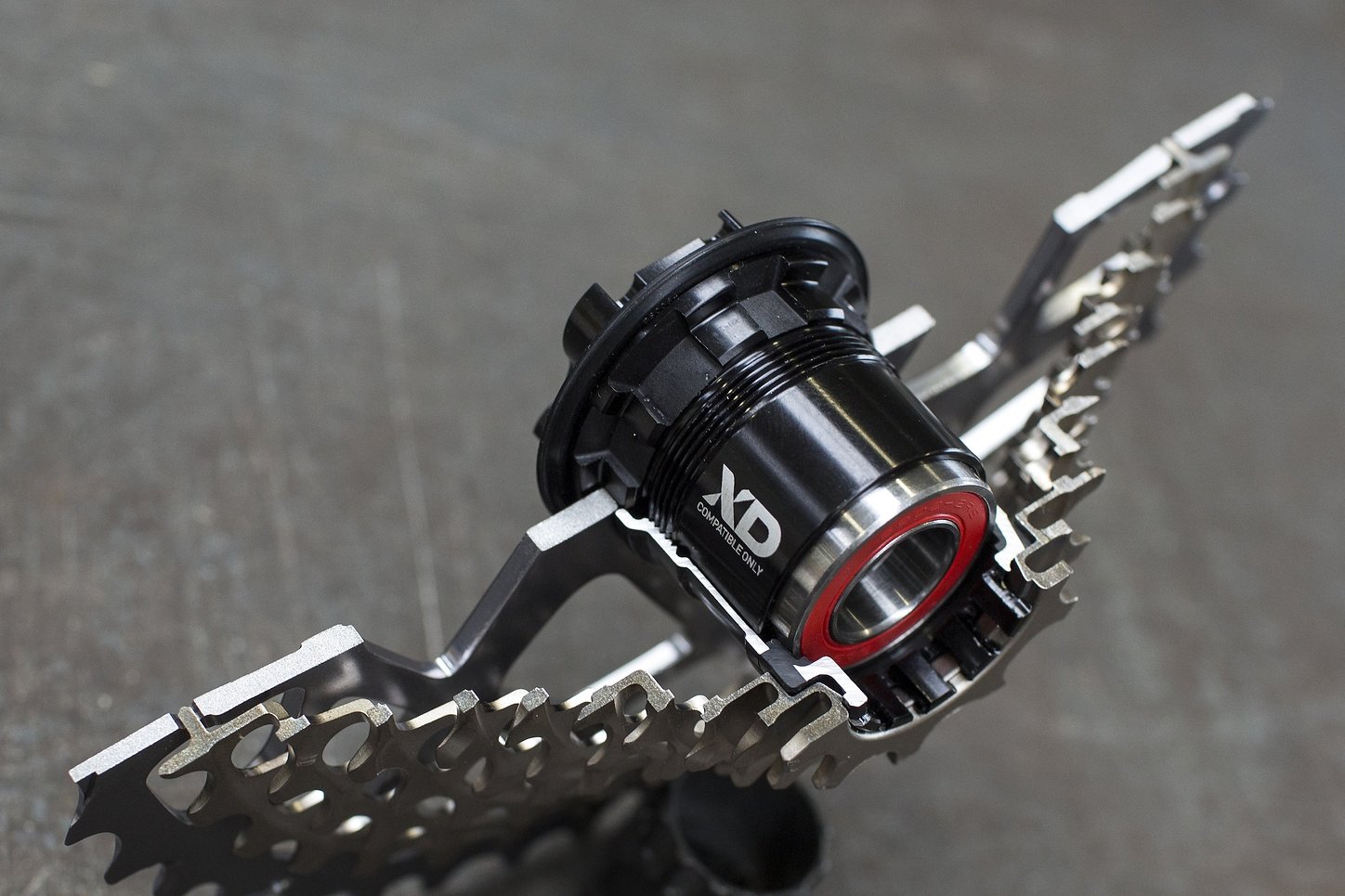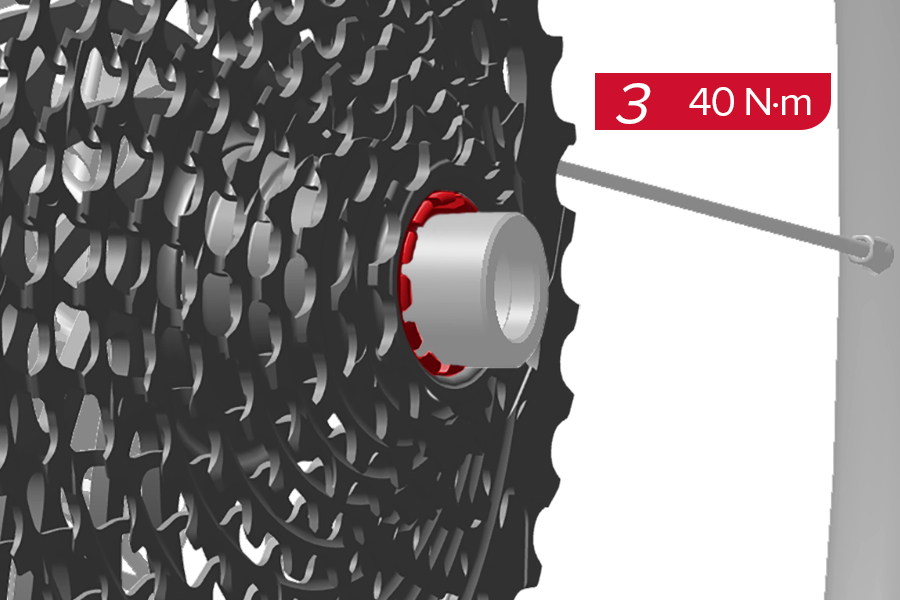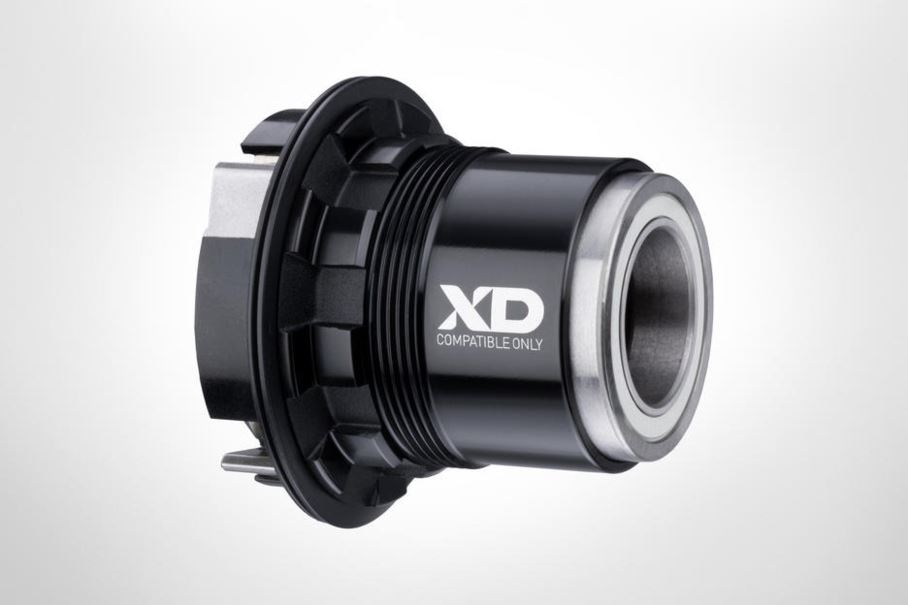The Significance of SRAM XD Cassette Torque
Proper SRAM XD cassette torque plays a crucial role in achieving optimal bike performance. Torque refers to the force that causes rotation, and in the context of a cassette, it is the force applied to secure the cassette to the freehub body. Achieving the recommended torque ensures that the cassette is correctly seated, resulting in improved shifting and increased longevity of components. Conversely, insufficient or excessive torque can lead to shifting issues, noise, and premature wear, negatively impacting the overall riding experience.
Understanding SRAM XD Cassette Torque Specifications
SRAM XD cassette torque specifications vary depending on the specific cassette model. These specifications are provided by SRAM to ensure optimal performance and longevity of the components. Adhering to these torque recommendations is essential to prevent damage to the cassette, freehub body, and other related components. Common SRAM XD cassette models, such as the XG-1199, XG-1275, and XG-1295, have specific torque requirements ranging from 35 to 45 Nm. It is crucial to consult the manufacturer’s documentation for the exact torque specifications for your specific SRAM XD cassette model.
Tools Required for Measuring SRAM XD Cassette Torque
To accurately measure SRAM XD cassette torque, you will need a few essential tools. These include a torque wrench and a digital torque gauge. A torque wrench is a hand tool that allows you to apply a specific torque to a fastener, ensuring it is tightened to the manufacturer’s recommended specifications. A digital torque gauge is a device that measures the amount of torque applied to a fastener, providing accurate and consistent readings. When selecting a torque wrench, consider the following factors:
- Accuracy: Choose a torque wrench with an accuracy of +/- 4% or better to ensure precise measurements.
- Range: Select a torque wrench with a range that includes the recommended torque specifications for your SRAM XD cassette.
- Durability: Opt for a high-quality torque wrench made from durable materials to withstand the demands of regular use.
- Ease of use: Look for a torque wrench with clear markings, a simple and intuitive design, and a comfortable grip.
When using a torque wrench and digital torque gauge, follow these best practices:
- Always double-check the recommended torque specifications for your specific SRAM XD cassette model.
- Ensure the torque wrench is calibrated and functioning correctly before each use.
- Apply the torque in a slow and steady manner, avoiding sudden or jerky movements.
- Once the desired torque is reached, stop applying additional force to prevent overtightening.
- Regularly clean and maintain your torque wrench and digital torque gauge to ensure their longevity and accuracy.
How to Measure SRAM XD Cassette Torque
To accurately measure SRAM XD cassette torque, follow these steps:
- Gather the necessary tools: A torque wrench and a digital torque gauge.
- Ensure the bike is properly supported with the wheel removed. Use a work stand or a secure mount to hold the bike in place.
- Install the SRAM XD cassette onto the freehub body, aligning the splines correctly.
- Slide the digital torque gauge onto the cassette lockring, ensuring it is properly seated against the lockring.
- Connect the digital torque gauge to the torque wrench, following the manufacturer’s instructions.
- Set the torque wrench to the recommended torque specifications for your SRAM XD cassette model.
- Slowly and steadily apply torque to the cassette lockring using the torque wrench, ensuring the digital torque gauge remains in place.
- Monitor the digital torque gauge as the torque wrench approaches the recommended setting. Stop applying torque as soon as the gauge indicates the desired torque has been reached.
- Record the measured torque for future reference and to ensure consistency in your maintenance routine.
When measuring SRAM XD cassette torque, keep the following tips in mind:
- Always double-check the recommended torque specifications for your specific SRAM XD cassette model.
- Ensure the torque wrench is calibrated and functioning correctly before each use.
- Apply the torque in a slow and steady manner, avoiding sudden or jerky movements.
- Once the desired torque is reached, stop applying additional force to prevent overtightening.
- Regularly clean and maintain your torque wrench and digital torque gauge to ensure their longevity and accuracy.
Maintaining SRAM XD Cassette Torque
Regular maintenance is essential for maintaining proper SRAM XD cassette torque and ensuring optimal bike performance. Follow these tips to keep your cassette in top condition:
- Clean and lubricate components regularly: After each ride or at least once a week, clean your cassette and chain with a suitable cleaning solution and a brush. After cleaning, apply a high-quality lubricant to the cassette and chain to ensure smooth operation and prevent corrosion.
- Inspect for wear and damage: Periodically inspect your cassette for signs of wear, such as bent or damaged teeth, and replace it if necessary. Also, check the freehub body for signs of damage or excessive wear, as this can affect cassette torque and overall bike performance.
- Re-torque as needed: Over time, cassette torque can loosen due to factors such as vibration and component wear. Re-torque your cassette to the recommended specifications after cleaning and lubricating components, and at regular intervals (e.g., every 50-100 miles or once a month) to maintain proper torque and prevent shifting issues.
- Use the correct tools: Always use a high-quality torque wrench and digital torque gauge when measuring and adjusting SRAM XD cassette torque. This ensures accurate and consistent measurements, reducing the risk of overtightening or undertightening the cassette.
- Record measurements: Keep a record of your cassette torque measurements to track changes over time and ensure consistency in your maintenance routine. This can help you identify potential issues before they become serious problems and maintain optimal bike performance.
By following these maintenance tips, you can help ensure proper SRAM XD cassette torque, improve shifting performance, and extend the longevity of your bike’s components.
Common Issues with SRAM XD Cassette Torque
Improper SRAM XD cassette torque can lead to various issues, negatively affecting bike performance and component longevity. Some common problems associated with incorrect cassette torque include:
- Shifting issues: Inadequate or excessive cassette torque can result in poor shifting performance, causing difficulty changing gears or increased noise during shifting. Proper cassette torque ensures smooth and precise gear transitions, enhancing overall ride quality.
- Component wear: Over time, improper cassette torque can lead to premature wear of the cassette, freehub body, and other related components. This can result in reduced component lifespan and the need for frequent replacements, increasing maintenance costs.
- Reduced efficiency: Incorrect cassette torque can negatively impact bike efficiency, leading to increased resistance and reduced power transfer. Proper cassette torque ensures optimal power transfer, resulting in improved bike performance and efficiency.
- Increased risk of damage: Excessive cassette torque can increase the risk of damage to the cassette, freehub body, and other components. This can lead to costly repairs or replacements and compromise the overall structural integrity of the bike.
To address these issues, it is essential to adhere to the recommended SRAM XD cassette torque specifications, employ proper measurement techniques, and maintain regular maintenance schedules. By doing so, you can help ensure optimal bike performance, improved shifting, and extended component longevity.
SRAM XD Cassette Torque: Frequently Asked Questions
Here are some common questions and answers about SRAM XD cassette torque:
What is the recommended torque for my specific SRAM XD cassette model?
SRAM provides specific torque recommendations for each XD cassette model. These can typically be found in the product documentation or on the SRAM website. Always consult the manufacturer’s recommendations before measuring or adjusting cassette torque.
How often should I re-torque my SRAM XD cassette?
The recommended frequency for re-torqueing a SRAM XD cassette can vary depending on factors such as riding conditions, component wear, and maintenance practices. As a general guideline, consider re-torqueing your cassette every 50-100 miles or at least once a month to ensure proper torque and optimal bike performance.
Can I use a regular wrench to tighten my SRAM XD cassette?
While it is possible to use a regular wrench to tighten a SRAM XD cassette, it is not recommended. Using a torque wrench and digital torque gauge ensures accurate and consistent measurements, reducing the risk of overtightening or undertightening the cassette. This helps maintain optimal bike performance, improve shifting, and extend component longevity.
What should I do if I suspect my SRAM XD cassette has improper torque?
If you suspect your SRAM XD cassette has improper torque, first consult the manufacturer’s recommendations for the correct torque specifications. Then, use a torque wrench and digital torque gauge to measure and adjust the cassette torque as needed. If you are unsure about the process or unable to resolve the issue, consider seeking assistance from a professional bike mechanic.
How can I prevent issues related to SRAM XD cassette torque?
To prevent issues related to SRAM XD cassette torque, follow these best practices:
- Adhere to the manufacturer’s recommended torque specifications.
- Employ proper measurement techniques when measuring and adjusting cassette torque.
- Maintain a regular maintenance schedule, including cleaning and lubricating components.
- Record measurements to track changes over time and ensure consistency in your maintenance routine.
By following these guidelines, you can help ensure optimal bike performance, improved shifting, and extended component longevity.







